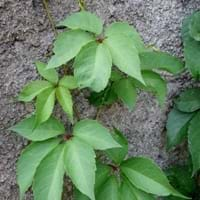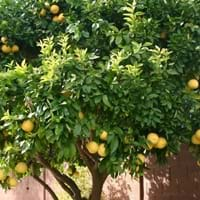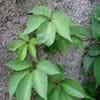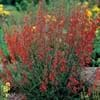Life Span
Perennial
Perennial
Origin
Central North America, Eastern Mexico, Eastern North America, Eastern United States, Southeastern Canada
South Asia, Southeast Asia
Types
Not Available
Not Available
Habitat
Brushlands, Chaparral, open Woodlands, Riverbanks, shaded woods, Stream side
Mediterranean region
USDA Hardiness Zone
7-8
8-10
AHS Heat Zone
Not Available
Not Available
Sunset Zone
Not Available
Not Available
Habit
Spreading
Spreading
Flower Color
Not Available
White
Flower Color Modifier
Bicolor
Bicolor
Fruit Color
Black, Blue
Green, Lemon yellow, Yellow
Leaf Color in Spring
Green, Purplish Green
Green
Leaf Color in Summer
Gray Green
Green
Leaf Color in Fall
Blue Green
Dark Green
Leaf Color in Winter
Gray Green
Dark Green
Plant Season
Late Summer
All year
Sunlight
Full Shade, Partial shade, Partial Sun
Full Sun
Type of Soil
Loam, Sandy
Rich
The pH of Soil
Neutral, Slightly Acidic, Slightly Alkaline
Acidic
Soil Drainage
Well drained
Well drained
Bloom Time
Late Summer, Summer
Spring, Summer
Tolerances
Drought
Full Sun
Where to Plant?
Ground
Container, Ground
How to Plant?
Seedlings
Divison, Seedlings
Plant Maintenance
Low
High
Watering Requirements
Needs less watering
Reduce watering once fruit are growing, Water daily during growing season
In Summer
Moderate
Lots of watering
In Spring
Moderate
Moderate
In Winter
Ample Water
Average Water
Soil pH
Neutral, Slightly Acidic, Slightly Alkaline
Acidic
Soil Type
Loamy, Moist, Sandy
Rich
Soil Drainage Capacity
Well drained
Well drained
Sun Exposure
Full Shade, Partial shade, Partial Sun
Full Sun
Pruning
Prune after flowering, Prune for shortening long shoots, Prune in late summer or fall
Prune to control growth, Remove dead branches
Fertilizers
Fertilize every year
Fertilize in early to mid-summer, for fruiting plants, use high phosphorous content fertilizer
Pests and Diseases
Aphids, Black Vine Weevil, Caterpillars, Flea Beetles, Leaf eating pests, Leaf Hoppers, Scale
Aphids, Citrus foot rot, Citrus gummosis, Citrus leaf miner, Red blotch
Plant Tolerance
Drought
Full Sun
Flower Petal Number
Single
Double, Semi-Double
Foliage Texture
Fine
Coarse
Foliage Sheen
Matte
Glossy
Attracts
Birds
Ants, Birds
Allergy
Abdominal pain, Bloody vomiting, Diarrhea, dilation of pupils, drowsiness, Headache, Nausea, Skin irritation, Sweating, Toxic, Twitching of face, Weak pulse
Anaphylaxis, Cough, Nausea, Rhinitis, Stomach pain, Swelling, Urticaria, Vomiting, wheezing
Aesthetic Uses
Showy Purposes, Used for decorating walls, fences, gates, hedges, etc.
Farmland, Showy Purposes
Beauty Benefits
No Beauty Benefits
Acne, Good for skin, Good for the Scalp, Improve skin tone, Moisturizing, Strong, beautiful hair
Environmental Uses
Air purification, Food for animals, Food for birds
Food for animals, Very little waste
Medicinal Uses
Antirheumatic, Cough, Diarrhea, Expectorant
anti-cancer, constipation, Digestive, Gastrointestinal disorders, Gout, Immunity, Jaundice, Respiratory Disorders, Rheumatoid arthritis, scurvy, Ulcers, Urinary problems, Weight loss
Part of Plant Used
Bark, Fruits, Root, Sap
Fruits
Other Uses
Used as Ornamental plant, Used in herbal medicines
Cosmetics, Used as a flavouring in food, Used As Food, Used for its medicinal properties
Used As Indoor Plant
No
No
Used As Outdoor Plant
Yes
Yes
Garden Design
Vine, Wall
Edible, Fruit Tree, Tropical
Botanical Name
Parthenocissus quinquefolia
Citrus limetta
Common Name
Virginia creeper, Victoria creeper, five-leaved ivy, or five-finger
sweet lime, sweet lemon, sweet limetta
In Hindi
वर्जीनिया लता
मौसम्बी
In German
Selbstkletternde Jungfernrebe, Wilder Wein
süße Limone
In French
vigne vierge vraie, vigne vierge à cinq folioles, vigne vierge de Virginie
Citrus limetta
In Spanish
Parra Virgen, Viña virgen y Enredadera de Virginia
limetta dulce, limón dulce mediterráneo, limón dulce y lima dulce
In Greek
αναρριχητικό φυτό της Βιρτζίνια
γλυκό ασβέστη
In Portuguese
Virginia Creeper
doce de limão
In Polish
winobluszcz
słodkie limonki
In Latin
Virginia creeper
dulcis ad cinerem
Phylum
Magnoliophyta
Magnoliophyta
Class
Magnoliopsida
Magnoliopsida
Order
Rhamnales
Sapindales
Genus
Parthenocissus
Citrus
Clade
Angiosperms, Eudicots, Rosids
Not Available
Tribe
Not Available
Citreae
Subfamily
Not Available
Citroideae
Number of Species
Not Available
Importance of Virginia Creeper and Sweet Lime
Want to have the most appropriate plant for your garden? You might want to know the importance of Virginia Creeper and Sweet Lime. Basically, these two plants vary in many aspects. Compare Virginia Creeper and Sweet Lime as they differ in many characteristics such as their life, care, benefits, facts, etc. Every gardener must at least have the slightest clue about the plants he wants to plant in his garden. Compare their benefits, which differ in many ways like facts and uses. The medicinal use of Virginia Creeper is Antirheumatic, Cough, Diarrhea and Expectorant whereas of Sweet Lime is anti-cancer, constipation, Digestive, Gastrointestinal disorders, Gout, Immunity, Jaundice, Respiratory Disorders, Rheumatoid arthritis, scurvy, Ulcers, Urinary problems and Weight loss. Virginia Creeper has beauty benefits as follows: No Beauty Benefits while Sweet Lime has beauty benefits as follows: No Beauty Benefits.
Compare Facts of Virginia Creeper vs Sweet Lime
How to choose the best garden plant for your garden depending upon its facts? Here garden plant comparison will help you to solve this query. Compare the facts of Virginia Creeper vs Sweet Lime and know which one to choose. As garden plants have benefits and other uses, allergy is also a major drawback of plants for some people. Allergic reactions of Virginia Creeper are Abdominal pain, Bloody vomiting, Diarrhea, dilation of pupils, drowsiness, Headache, Nausea, Skin irritation, Sweating, Toxic, Twitching of face and Weak pulse whereas of Sweet Lime have Anaphylaxis, Cough, Nausea, Rhinitis, Stomach pain, Swelling, Urticaria, Vomiting and wheezing respectively. Having a fruit bearing plant in your garden can be a plus point of your garden. Virginia Creeper has no showy fruits and Sweet Lime has showy fruits. Also Virginia Creeper is flowering and Sweet Lime is flowering. You can compare Virginia Creeper and Sweet Lime facts and facts of other plants too.





